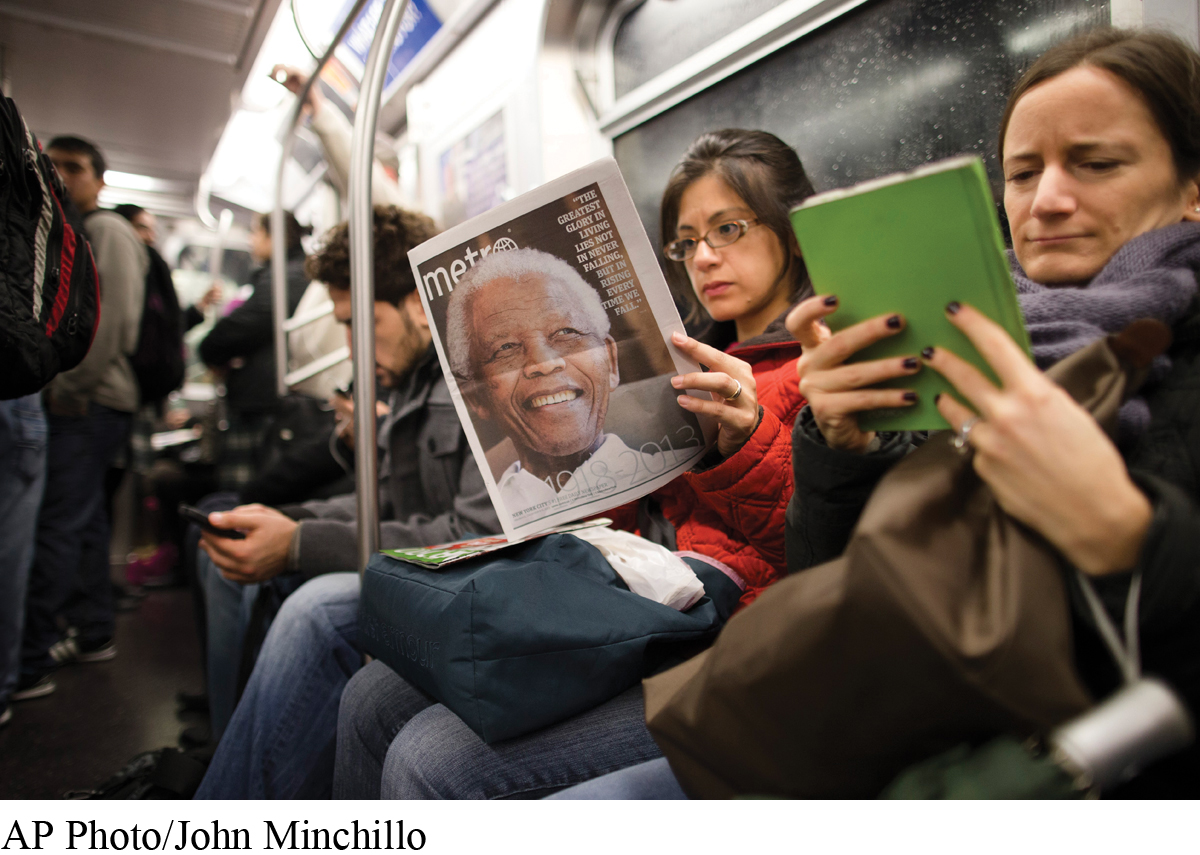Chapter 8 Introduction
WORDS AND PICTURES
8
Newspapers The Rise and Decline of Modern Journalism

Advertising Age reported in 2013 that adult newspaper readership had fallen by 20 percent since 2001. Among major U.S. cities, Pittsburgh had the most adults—
Despite these numbers, some big investors have been picking up papers at bargain prices. Amazon’s Jeff Bezos paid $250 million in 2013 for the Washington Post—last sold at auction in 1933. Investment guru Warren Buffett bought more than sixty newspapers in 2012 and 2013—
In other words, some newspaper executives are betting that good old television is the way to go—
So with newspaper advertising’s share declining dramatically over the past decade and digital media in ascendance, what will happen to newspapers—
Just as the music and radio industries have adapted and survived over the years, newspapers will survive, too—
DESPITE THEIR CURRENT PREDICAMENTS, newspapers and their online offspring play many roles in contemporary culture. As chroniclers of daily life, newspapers both inform and entertain. By reporting on scientific, technological, and medical issues, newspapers disseminate specialized knowledge to the public. In reviews of films, concerts, and plays, they shape cultural trends. Opinion pages trigger public debates and offer differing points of view. Columnists provide everything from advice on raising children to opinions on the U.S. role as an economic and military superpower. Newspapers help readers make choices about everything from what kind of food to eat to what kinds of leaders to elect.
Although newspapers have played a central role in daily life, in today’s digital age the industry is losing both papers and readers. Newspapers have lost their near monopoly on classified advertising, much of which has shifted to free Web sites like craigslist and eBay. According to the Newspaper Association of America (NAA), in 2013 total newspaper ad revenues totaled more than $38 billion, a decline of 2.6 percent from 2012, when revenues fell 6 percent. Of that total, $24 billion came from ads across all platforms, $11 billion came from circulation, and $3.15 billion came from “other sources.” In 2012, online ads accounted for about $3.4 billion in total revenue, while print advertising brought in more than $18.6 billion in ad revenue for the nation’s papers—
In this chapter, we examine the cultural, social, and economic impact of newspapers. We will:
Trace the history of newspapers through a number of influential periods and styles
Explore the early political-
commercial press, the penny press, and yellow journalism Examine the modern era through the influence of the New York Times and journalism’s embrace of objectivity
Look at interpretive journalism in the 1920s and 1930s and the revival of literary journalism in the 1960s
Review issues of newspaper ownership, new technologies, citizen journalism, declining revenue, and the crucial role of newspapers in our democracy
As you read this chapter, think about your own early experiences with newspapers and the impact they have had on you and your family. Did you read certain sections of the paper, like sports or comics? What do you remember from your childhood about your parents’ reading habits? What are your own newspaper reading habits today? How often do you actually hold a newspaper? How often do you get your news online? For more questions to help you think through the role of newspapers in our lives, see “Questioning the Media” in the Chapter Review.